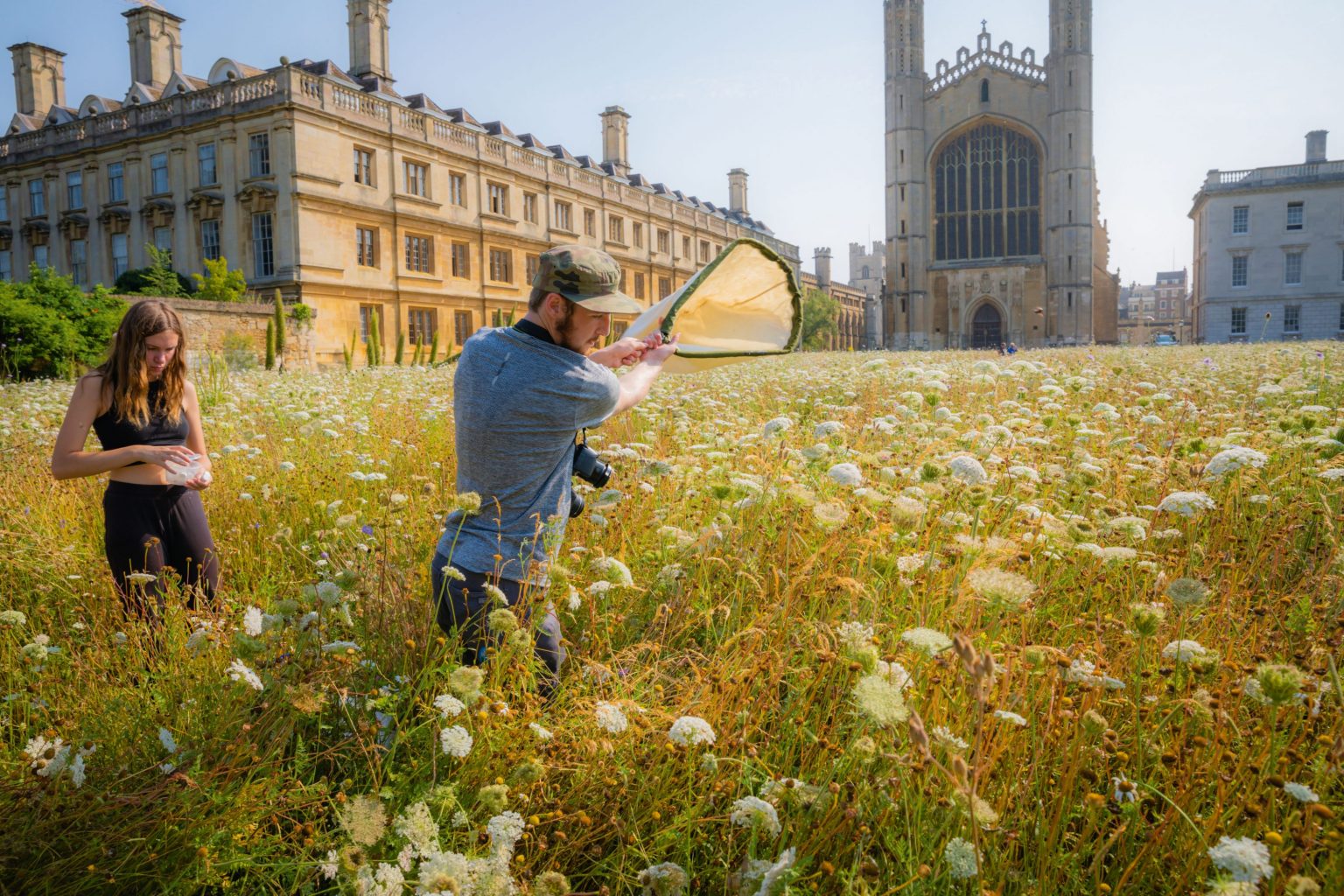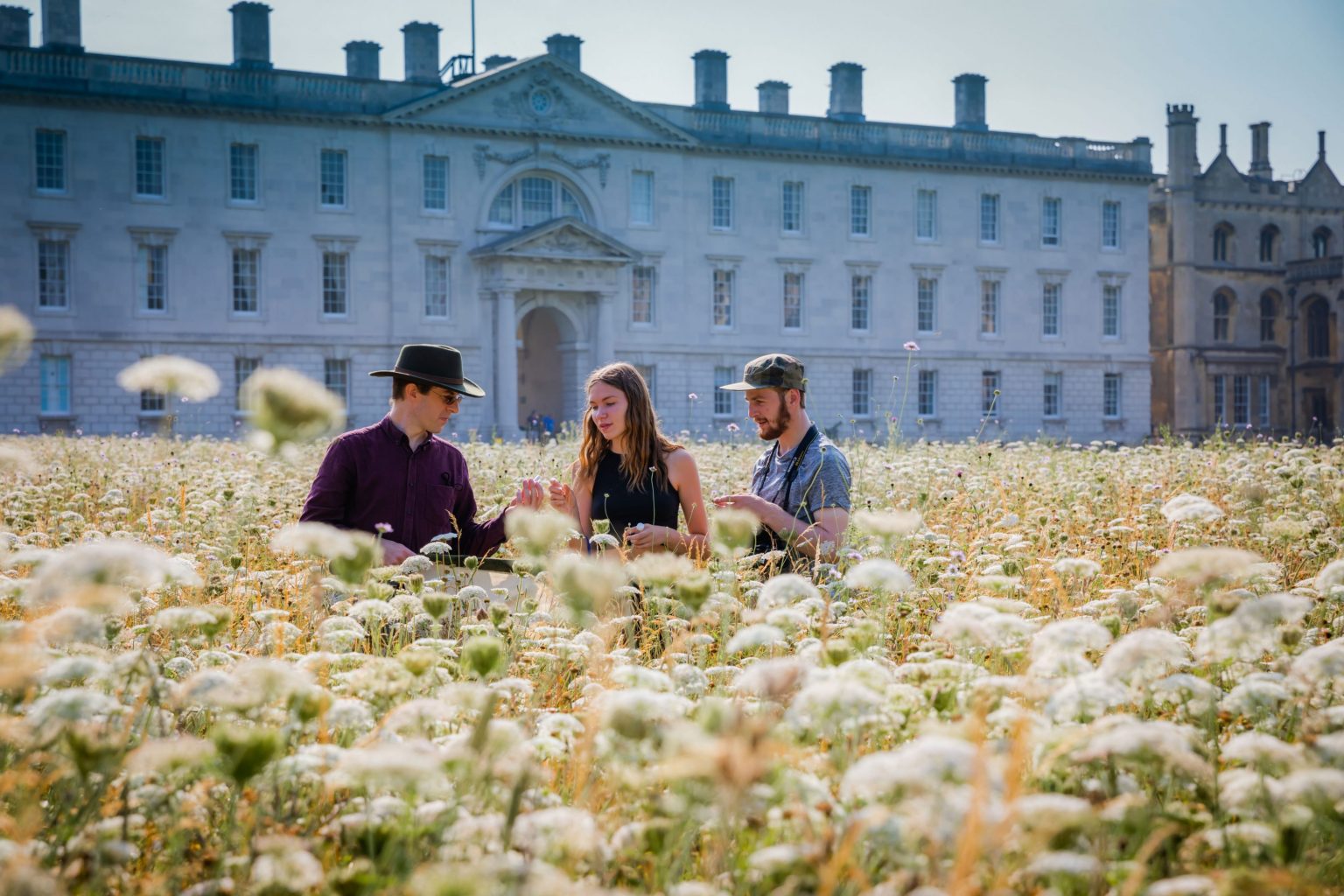My garden, your garden
Seed the difference. Why King’s has pulled up the turf in favour of a meadow.
Don’t walk on the grass. And we haven’t – for 260 years. But now that same grass has been taken over by a riot of poppies, cornflowers, scentless mayflowers, kidney vetch, yellow rattle and corncockles (though still, please don’t walk on it). Welcome to King’s wildflower meadow.
Why the change? The lawn may have looked lush, but it was in terrible condition, says research fellow Dr Cicely Marshall (Department of Plant Sciences). “It was riddled with the chafer beetle caterpillar that lives under lawns, eating the grass roots. Crows then come along to eat the caterpillars and pull up the turf, leaving big dead patches.”

Indeed, Cambridge’s sandy, nutrient-poor soil is simply not suitable for lawns, she points out. Maintaining them is a losing battle that requires a vast amount of environmental input – nutrients, water and pesticides. “And it still doesn’t work very well,” says Marshall.
The original idea came from Geoff Moggridge, Professor in Chemical Engineering Science, whose proposal was guided by the expert knowledge of Marshall and Steven Coghill, King’s Head Gardener. Planting began in October 2019, and the meadow has now flowered for two years.
The project has three goals: to increase aesthetic value, combat climate change and reverse wildlife losses. All the world’s a research project to a King’s research fellow, and Marshall seized the opportunity to observe and record the impact. Plant species have tripled, as more insects and birds come to the meadow and bring more seeds with them. About five times as many insects come to visit than before, which in turn has encouraged five different species of bat, who are 10 times more likely to feed over the meadow than the lawn. And 130 insect species have been recorded so far, including the elephant hawk-moth and the meadow brown butterfly.

It’s also created an ideal chance for students to study biodiversity in action. Natural Sciences student Calum McLennan (King’s Second Year) spent three weeks last summer as an intern for the King’s Wildflower Meadow project, recording all the different aspects of biodiversity it attracted – plants, insects, birds, and bats.
“I’ve particularly enjoyed observing the bats,” he says. “One species, the Daubenton’s bat, only seems to hunt over the water. While pipistrelles hunt for midges and moths over the meadow, the Daubenton’s swoops very low over the water and scoops them up, using membranous flaps to catch them.”
As autumn arrives and the days become shorter, the King’s community is looking forward to the life and colour next year in the meadow will bring. “There will always be people who prefer a lawn,” says Marshall. “But a lot of people think the wildflower meadow is beautiful, too.”







